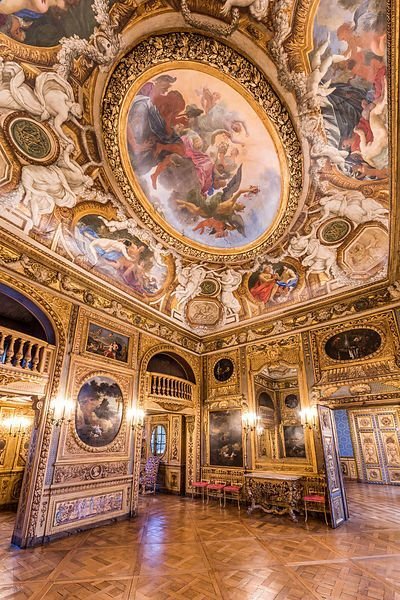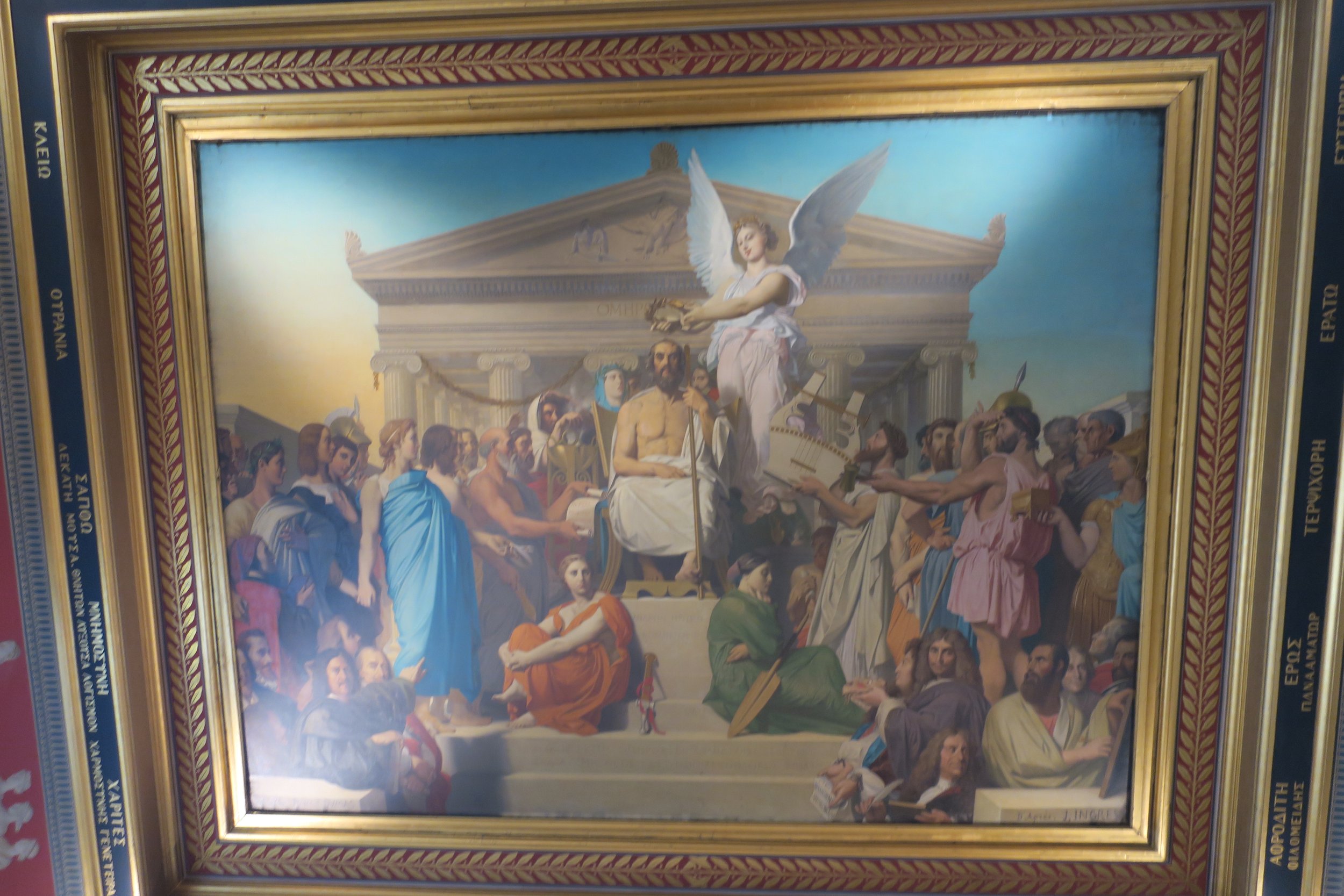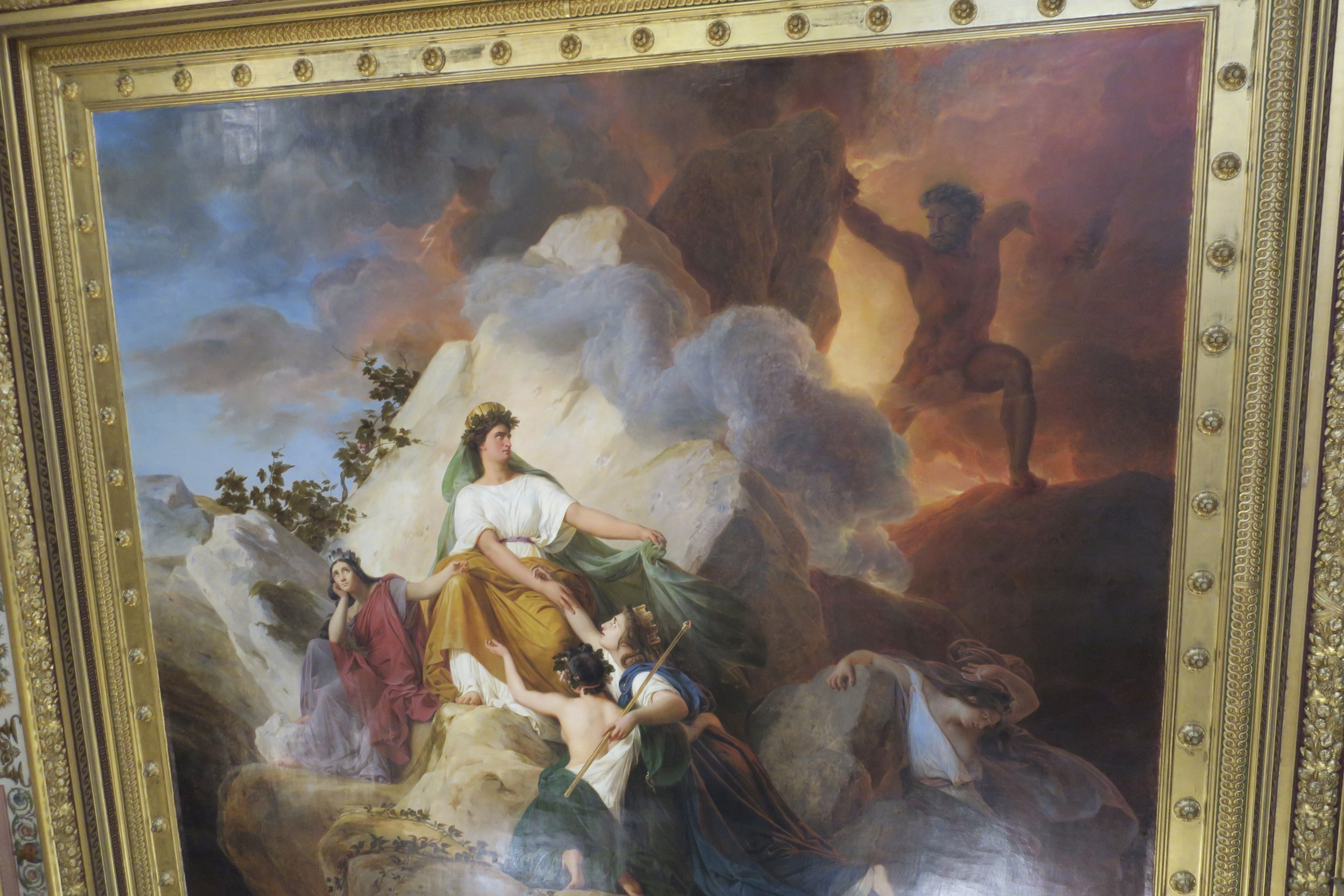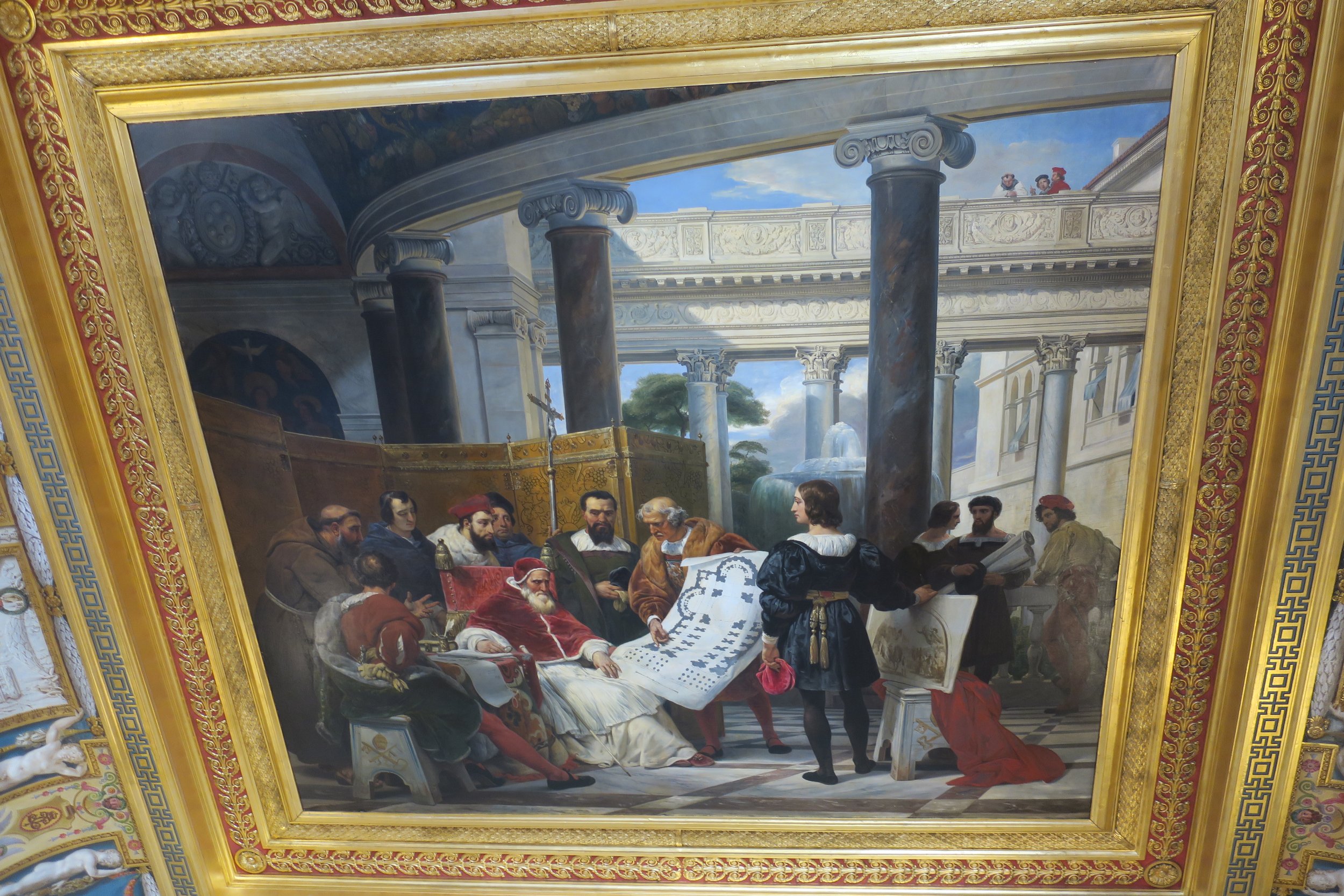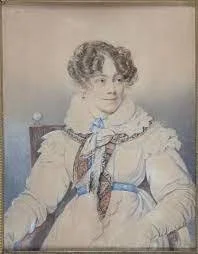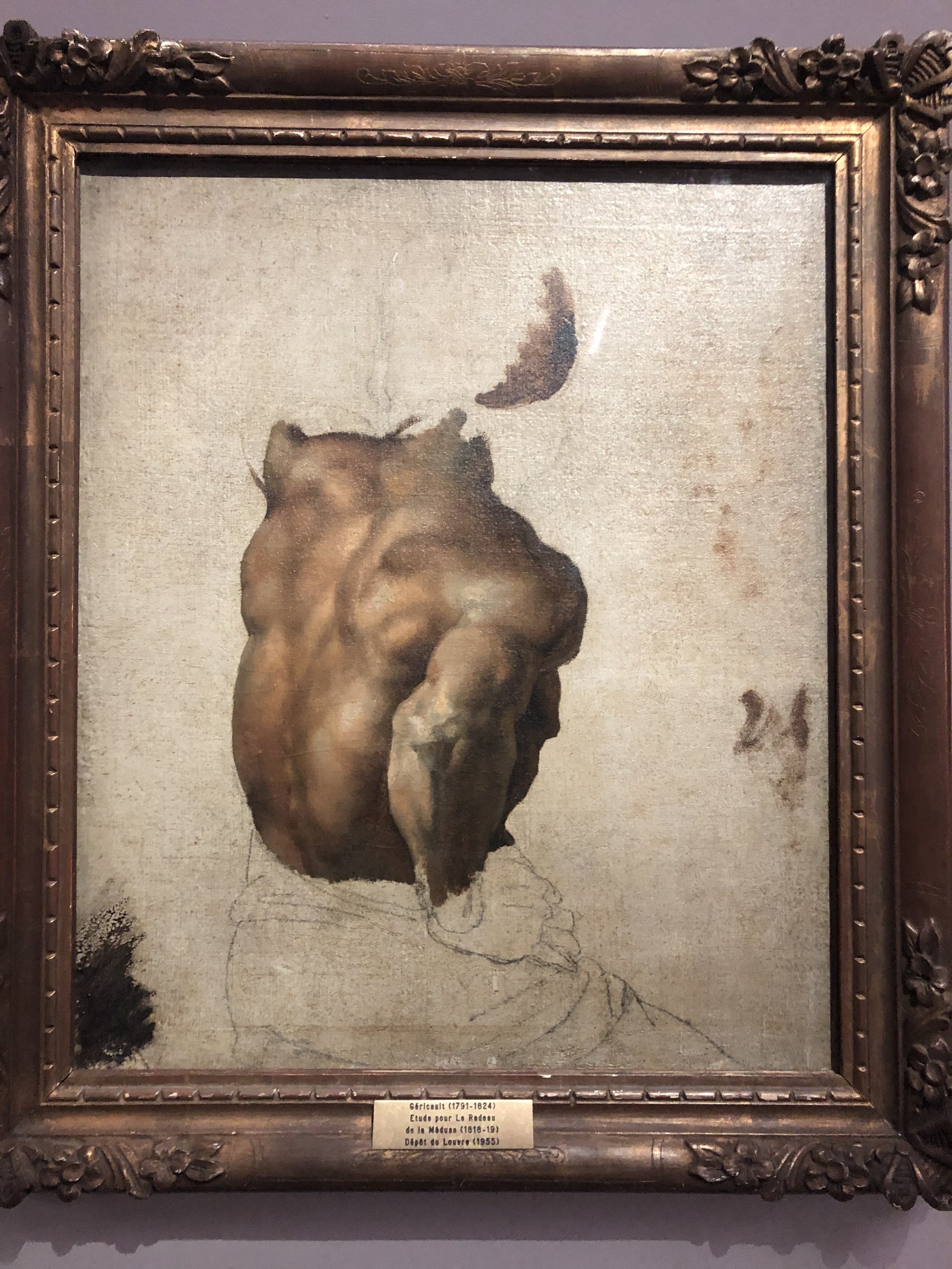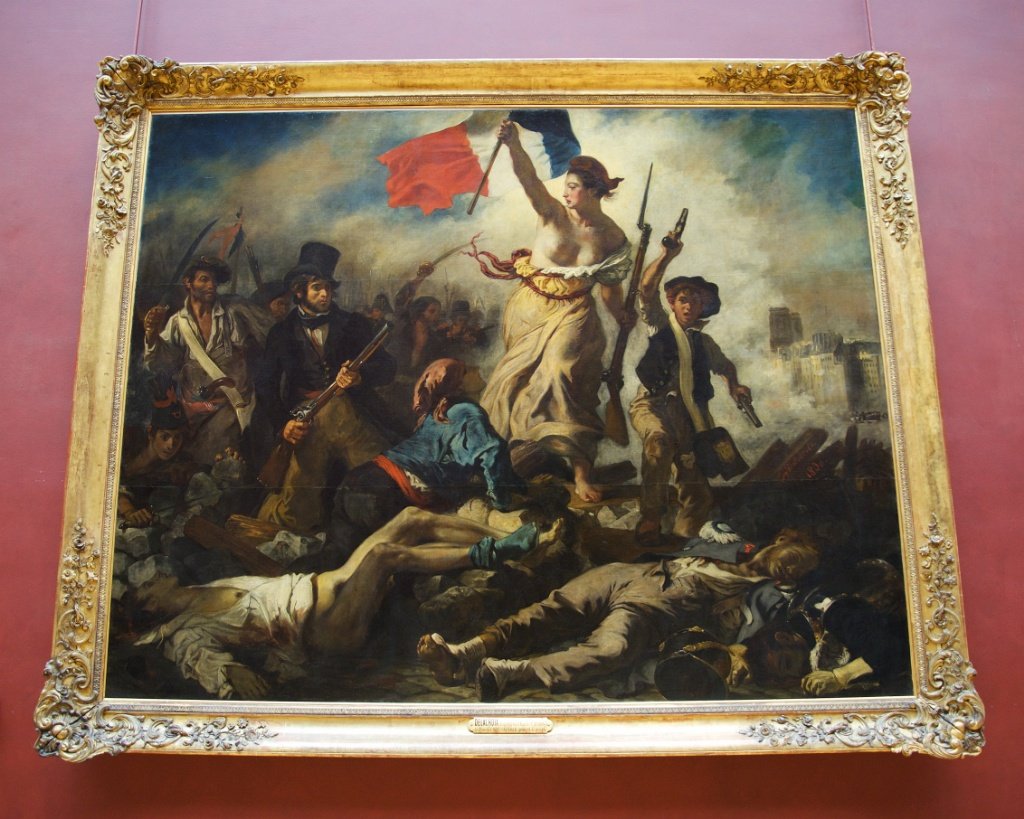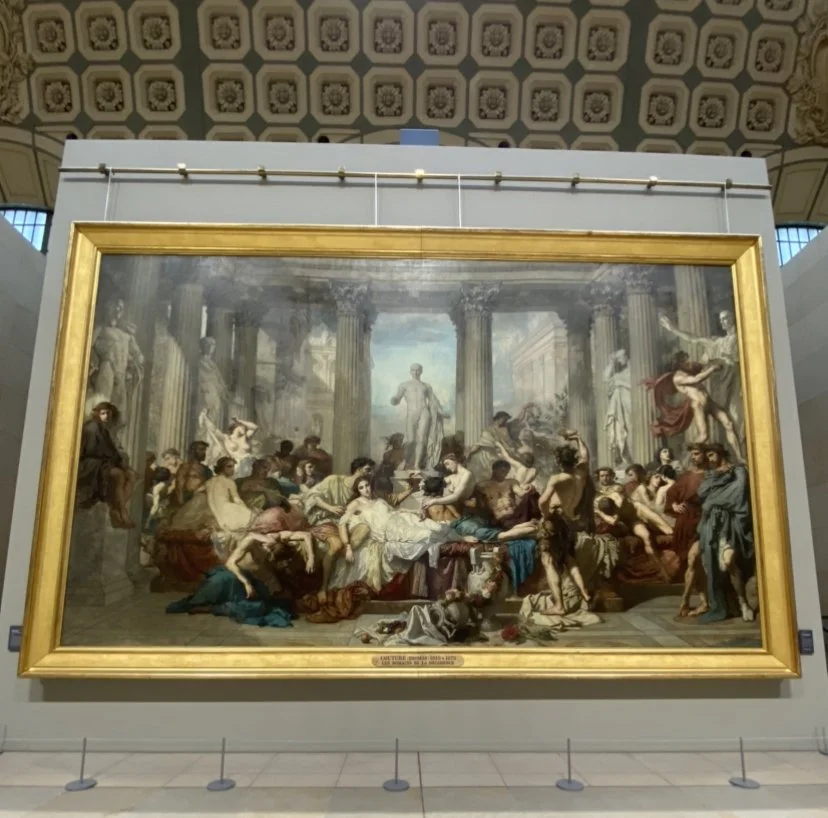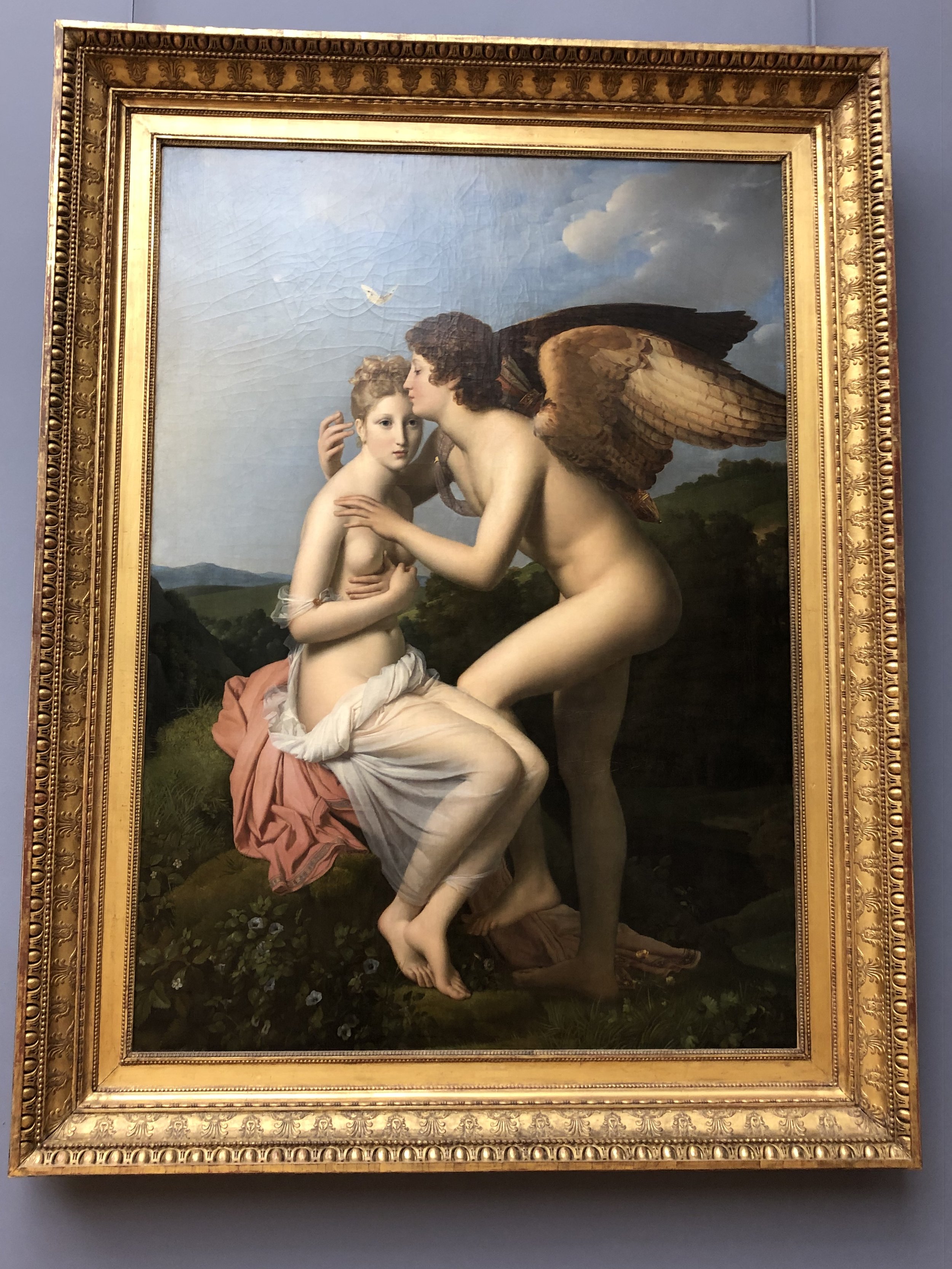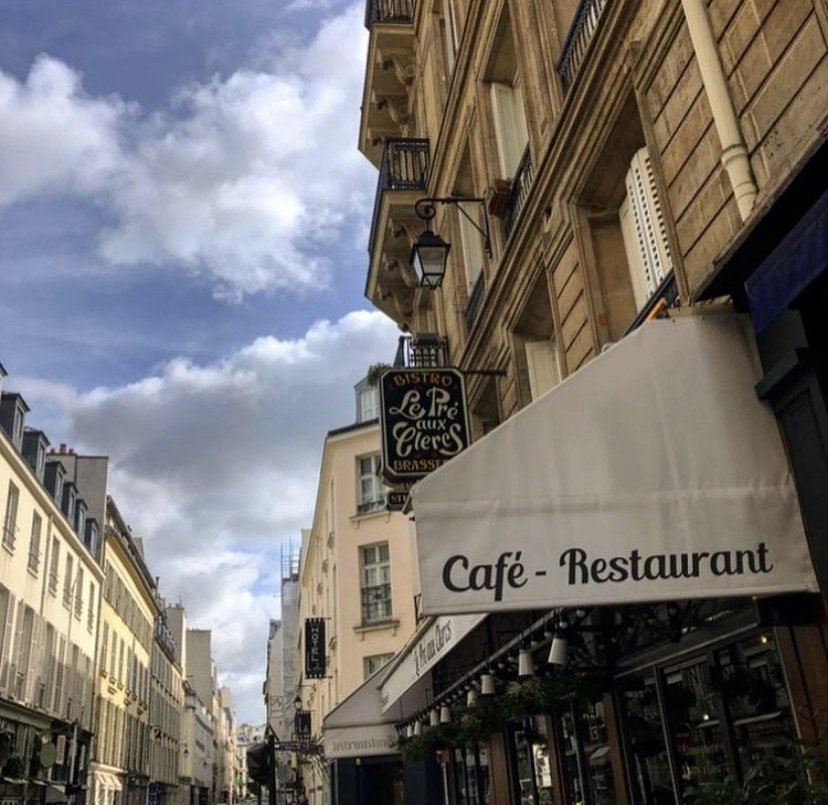Starting at the eastern end of Ile Saint Louis in the Square Barye created in 1938 and named for animal sculpture Antoine-Louis Barye. The Célestins convent once stood here and stretched across to the right bank. Built in 1254 it was once the home to the tombs of the monarchy and other illustrious people in French history. A closer to the city version of the Basilique Saint Denis. It was closed in 1778, before the Revolution which would have surely destroyed it.
In 1848 the chapel was torn down and the tombs moved to Saint Denis, Versailles and the Musée du Louvre.
Antoine-Louis Barye, a 19th century sculptor was first a goldsmith and commissioned to design a deer for a soup tureen. He decided to go to the Jardin des Plantes and study the deer so he could get it as close to accurate as possible. His first piece at the 1831 Salon got everyone's attention including Eugene Delacroix. Delacroix and Barye visited the zoo together and sat and sketched the animals for hours.
The monument to Barye her in the square Barye was designed by Laurent Marqueste after the death of the artist in 1894. Commissioned by his beloved fans and sat here before the square was created. The spot was chosen as Barye had lived just across the bridge on the Quai Célestins that was once connected with a pedestrian bridge from the square.
The top of the monument are copies of Barye’s Theseus fighting the Centaur in bronze. The lower pedestal with La Force and L’Ordre and Lion & Snake on the lowest portion. In 1942 the Vichy government melted down the original and in 2011 it was finally replaced with a new shiny version.
From the end of the square at the tip of the eastern end of Ile Saint Louis the Tino Rossi park and it’s outdoor sculptures can be seen as well as the Jardin des Plantes.
Pont Sully, named for Maximilien de Béthune Duc de Sully and longtime friend and minister to Henri IV. The Pont Sully replaces the Passerelle Damiette and Constantine that was in place from 1838 to 1848. The current pont was built in 1867 under Haussmann.
Quai d’Anjou
No 1 by Louis Le Vau and was built for Jean-Baptiste Lambert de Thodigny in 1640. He tapped some of the best artists of the time to create the decor and ceilings including Charle Le Brun, Eustache Le Seur and François Perrier. The small Cabinet de l’Amour was an alcove with a canopy bed that the lady of the house would welcome her visitors. The walls and ceilings were decorated with the panels by Le Seur dedicated to the story of L’Amour, Cupid. Today the sketches and a few of the originals are in the Louvre, on the 2nd floor of the Sully wing. Le Sueur also did the Cabinet of Muse’s that had you guessed it, paintings of the muses and are also in the same room of the Louvre.
Voltaire and the Marquis du Chateelet, his lover, used it from time to time and held a popular salon. From 1732 to 1739 Claude and Louise-Marie Dupin, great grandparents of George Sand purchased and lived here. One of its highest points was in 1843 when Prince Adam Jerry Czartoryski, a Polish prince bought the large property that saw many of the Romantic artists and writers including Delacroix. Balzac, George Sand and Chopin. Oriental and Polish themed balls were held and Chopin even wrote a few of his most popular pieces for the events.
Guy and Marie-Helene de Rothschild owned it from 1975 to 2007 at his death when it was sold to the current owner, the brother of the Emir de Qatar. At $111 million it was one of the most expensive at the time. The Emir wanted to do a massive renovation that would destroy much of the original interior and the city was up in arms. The city put a stop to it and the Ministry of Culture sued the owner to stop them. After three years a deal was reached that required an official from the city be involved every step of the way, In 2013 while under construction a fire broke out on the roof and damaged or destroyed much of the Le Seuer and Le Brun paintings.
No 3 Hotel Le Vau built by architect Louis Le Vau for his own residence.
No 5 Hotel de Marigny, built in 1640 and home to the inventor of the Marly machine that brought water to the fountains of Versailles.
No 7 The Hotel Lambert once stretched all the way to number 7. It now holds the Bakery Guild of Paris.
No 9. In the 19th century Lithographer and painter Honoré Daumier lived here. From 1846-1863 he also did political cartoons and sculpteurs.
No 11 The man that we can thank for much of the beauty of Notre Dame and Sainte Chapelle lived here. Adolph Geoffrey-Dechaume worked with Viollet Le Duc on both churches and designed the 16 statues that once lined the roof and the rooster at the top of the spire. All the statues escaped a dismal fate when they just happen to be removed 4 days prior to the fire. Today you can see all 16 beauties in Paris up close at the Cite de l'Architecture. Listen to the story of each of them in the past episode of Paris History Avec A Hemingway
No 13, once a part of its neighbor at number 11 it was separated and physicist Henri-Louis Duhamel du Monceaus lived here.
No 15 The ivy on framing the windows are wonderful. Louis Le Vau also built this one in 1645 that was part of the Hotel Lambert. Paul Cézanne lived here and for a few short months in 1843 Charles Beaudelaire did until he moved one door down.
No 17, the Hotel Lauzun, one of the addresses I desperately want to see inside of. It was built in 1657 by Charles Chamois for Charles Gruyn, a wealthy French banker. In 1682 it was purchased by its namesake the Duc de Lauzun and three years later the niece of Cardinal Mazarin, Hortense Mazarin and her husband the nephew of Cardinal RIchelieu, Charles de la Porte. Hortense was fourteen years younger then Charles and he had a mean, jealous streak and was very controlling. The home was filled with the statues that once belonged to Cardinal Richelieu. One night when she was out he went into a rage and started to attack the marble statues, knocking off the naughty bits of male statues. Luckily they were later repaired and now are in the Musée du Louvre.
Baudelaire moved in from next door in 1843 and lived there for two years. Paranoid and on drugs much of the time he covered the windows with paper so he was always in the dark.
The inside interior has amazing carved woodwork and decorations by Charles Le Brun and Jean-Baptiste Monnoyer. Don’t miss the dolphin drain spout on the facade as well.
No 19 built in 1642 is now a kindergarten
No 23 & 25 Once was much larger and divided into four separate residences. The field marshal of Louis XIV once lived here.
No 29 William Bird’s Three Mountain Press was opened in 1922 and in 1924 a young Hemingway had his first In Our Time published. Just 170 copies
No 33 Au Rendezvous de Mariniers where Picasso, Hemingway and John dos Passo would hang out
No 37 Hemingway’s friend John Dos Passo moved in here in 1921
No 39 the Theatre Ile Saint Louis, which we happily saw today is open and doing shows and concerts.
We cross over to the Quai de Bourbon and past the Rue des Deux-Ponts named for the two bridges it leads to, the Pont de la Tournelle and Pont Marie.
Quai Bourbon
No 11 the former home of painter Philippe de Champaigne in 1643. The official painter to Richelieu was born in Belgium and stopped in Paris on his way to Rome. Marie de Medicis asked him to paint a few frescos in the Palais du Luxembourg when he would also meet Richelieu. His stunning painting of Richelieu in full Cardinal dress is in the Louvre.
No 17 & 19 Hotel de Jaussaud. Built in 1642 for Nicolas de Jassaud, advisor to Louis XIII and it stayed with his heirs until 1768. Artist Francois Mouchet lived here while he was storming the Tuileries on June 20, 1792 that quickly marked the end of Louis XVI.
The most famous resident at no 19 was the wonderful Camille Claudel who moved here in 1899 the same year she ended her relationship with Rodin. In a ground floor apartment and studio she hid herself away, rarely leaving. Commissions for private pieces kept her going but eventually her mental health started to crumble. Alone in her apartment she was convinced Rodin was out to get her. With paranoia too much to handle she never walked out her door and began to destroy many of her sculptures.
In 1910, her apartment at the tip of Ile Saint Louis was flooded followed by her taking a sledgehammer and destroying all her plaster molds.
On March 2, 1913 her father, Louis Prosper Claudel died. Paul, Louise and their mother decided not to tell Camille of his passing or his funeral. Paul took action and had Camille committed and convinced their mother to sign the papers placing her in an asylum. On March 7, 1913 she was diagnosed with dementia, malnutrition, alcoholism and paranoia. Placed in the Ville Evrard asylum in Seine St Denis, Paul told the doctors that no one was allowed to visit and letters were never to be given to her. Back at her studio on Ile Saint Louis, her family destroyed what was left of it. Nothing was spared.
For thirty years Camille was locked up and alone and at two in the morning on October 19, 1943 she died alone of a stroke brought on by malnutrition at the age of 78. For thirty years she rarely had a visitor including her family. When she died, Paul declined to pay for a tomb or marker and the beautiful artist was buried in the cemetery at the asylum with only a few staff in attendance.
Listen to her entire heartbreaking story about the woman that left us beautiful and emotional art we can love for generations.
Side street Rue le Regrattier has a fun little treat up above on the corner. The street before was known as the Rue de la Femme Sans Tette. You can still see the former name carved into the building. On the corner is what remains of the former statue of Saint Nicolas added by Nicolas de Jaussaud. During the Revolution this poor guy lost his entire upper body.
Down the street a bit at number 6 is where Beaudilaire put up his mistress Jeanne Duval, keeping her close by to his multiple addresses. Listen to the story of her life from episode 117 of Paris History Avec A Hemingway.
No 21 Hotel de Jaussaud d’Arquivillers. Sculptor Auguste Préault lived in mid 19th century and where he did the statue of Clèmence Isaure that is one of the 20 Illustrious Women in the Jardin du Luxembourg. You can also find his work in the Cour Napoleon of the Louvre on the facade. Listen to the 2 part episodes about the 20 ladies. You can even take it with you for a custom tour anytime you want. Part 1 and Part 2.
No 25 Hotel de Nevres, former Hotel Henri III built after he had died. Cardinal Richelieu’s nephew lived for a short period.
No 29 Hotel d’Arcelot built in 1750 for the Marquis d’Arcelot member of the grand counsel of Louis XIV. In 1893 landscape painter Emmanuel Lansyer.
No 31 Theophraste Renaudot, physician of Louis XIII and later the first Paris pawn shop owner
No 43 Hotel de Tolzon, named for Charles Tolzon, husband of Anne Le Vau, Louis La Vau’s sister. Notice the masonic symbol between the first floor windows
No 45 Built by another Le Vau, Francois, the younger brother of Louis in 1659. In the 18th century the bas reliefs of Hercules attacking Nessus were added.





